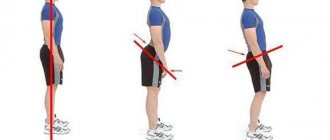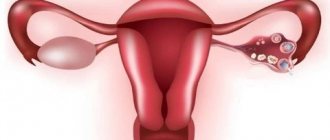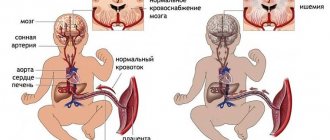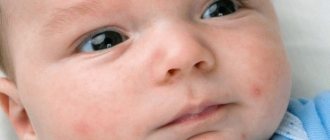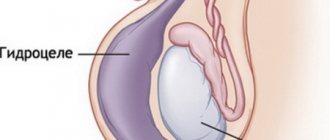Torticollis is a common orthopedic disease among newborns. It is manifested by a constant tilt of the baby's head to one side. In most cases, it is quite possible to correct the defect. The main thing is to identify it in time and treat it.
In the first 4 weeks of life, the child does not yet know how to hold his head, so young parents may not notice the problem. As a rule, the doctor informs you that torticollis in an infant is at the next preventive examination. In this case, you need to start treatment urgently to avoid dangerous complications.
What it is?
Torticollis is a pathology that is caused by deformation of the soft tissues, bones and nerves of the neck. Then the child constantly tilts his head to his shoulder, turning it in the opposite direction. The disease limits mobility in the neck area.
Doctors identify the following types of torticollis in children:
- Congenital torticollis (muscular). It occurs due to insufficient development of the fibers of the sternocleidomastoid muscle.
- Compensatory. Develops as a result of visual or hearing disorders.
- Neurogenic. The cause is damage to the central nervous system or peripheral nerves.
- Bone. It occurs against the background of congenital pathologies of the cervical spine.
- Reflex. Caused by involuntary muscle contraction.
- Articular. Occurs when the vertebrae are dislocated.
- Dermatogenic. Develops due to the presence of skin folds or scars on the neck.
- Installation (positional). Caused by improper child care.
Reference. Pathology can be right-sided, left-sided, or bilateral. But more often there is a right-sided rotation of the head in children.
In most cases, boys suffer from the deformity.
Torticollis in a child resembles hypertonicity of the neck. To establish an accurate diagnosis, you need to contact a pediatrician, neurologist or orthopedist.
Prevention
All parents can prevent the appearance of torticollis. To do this, it is necessary to provide proper care for the baby.
The main preventive methods are recommended:
- regularly shift the baby from side to side, onto the back;
- place toys and rattles evenly on both sides of the child, use hanging mobiles;
- when the crib is located against the wall, there is no need to rearrange the crib; it is enough to change the position of the child: one day he is laid with his legs, on another day his head is towards the headboard.
Usually such measures are sufficient to prevent the development of pathology.
Causes
Based on the time of appearance, doctors distinguish between congenital and acquired pathologies. The first appears immediately after birth, and the second occurs under the influence of negative factors at any age.
Causes of torticollis in infants:
Neck muscle pain
- Underdevelopment of the mastoid (sternocleidomastoid) muscle. Problems with the muscle can arise due to malnutrition of the tissues of the neck, incorrect position of the fetus (for example, breech presentation), entanglement in the umbilical cord, and injuries during difficult childbirth.
- Congenital fusion and change in the shape of the cervical vertebrae or cervical ribs.
- Cervical vertebrae injuries.
- Destruction of the vertebrae due to tuberculosis, osteomyelitis (purulent-necrotic process in the bone), and oncological diseases.
- Spasm or paralysis of the neck muscles caused by polio, encephalitis, central nervous system tumors, etc.
- Oxygen starvation or intrauterine infection.
- Pterygoid neck (lateral folds of skin on the neck).
- Scars on the skin after burns, injuries, inflammation of the lymph nodes, etc.
- Diseases of the visual organs, for example, strabismus, astigmatism.
- Pathologies of the inner ear.
- Incorrect positioning and carrying of infants with the head turned to one side, placing toys on one side.
Reference. The easiest to treat is positional torticollis, caused by improper parental care.
Symptoms
The first signs of torticollis can be noticed in the maternity hospital or 2-3 weeks after birth. A mild degree of deformation can be determined after a few months.
With torticollis, the head tilts towards the shoulder
At about 3 months, symptoms become more pronounced:
- The head is tilted towards the left or right shoulder, the chin is turned in the other direction.
- When the head is forcibly turned, the baby feels discomfort.
- The upper half of the face on the damaged side drops slightly, the eye squints, and the area above the shoulder rises.
Symptoms of bilateral damage: the head is thrown back or lowered to the chest, neck mobility is limited.
Signs of osteogenic torticollis in infants caused by pathologies of the cervical vertebrae:
- the neck shortens and bends to one side;
- the head is set low;
- It is difficult for the child to move his neck.
Manifestations of pathology caused by intrauterine hypoxia and infections are easy to recognize. Then the muscle tone on one side decreases, and on the other side it increases, the hand (on the affected side) is clenched into a fist, the leg is bent, but the baby can move its head.
If you notice such manifestations, then rush to contact your pediatrician.
What does it look like
The baby can move and lead a normal life, except for those moments when he needs to turn around. To notice signs of torticollis in newborns, you need to carefully observe the baby. The main symptoms of torticollis in newborns:
- the baby turns his head only in one direction, turning in the opposite direction is difficult;
- one shoulder is higher than the other (ideally, the child’s body should resemble the letter “T”);
- the child throws his head back;
- It is difficult for a baby to hold his head straight;
- on the side where the baby turns his head more often, the neck becomes hard to the touch.
If the disease is advanced, then you can observe pronounced external manifestations:
- a depression may appear between the neck and shoulder;
- the back of the head is oblique on one side;
- The baby's face may become asymmetrical.
If you suspect torticollis, you should immediately consult a doctor!
Treatment options
Your doctor will tell you what to do if you have torticollis. You may need to consult an orthopedic traumatologist, neurologist, ophthalmologist and other pediatric doctors.
First, the specialist collects anamnesis, conducts a visual examination and instrumental diagnostics (ultrasound, X-ray, CT, MRI, electromyography, electroneurography, etc.).
To avoid problems with an infant, you need to start treatment 2-3 weeks after birth. As a rule, conservative methods help correct the deformation:
- therapeutic exercises that help stretch the sore muscle;
- massage is also used to increase the elasticity of the damaged muscle;
- using a neck brace (Schanz collar), which will fix the head in the correct position. And taping is also successfully used - applying tape (elastic cotton tape with an adhesive base) to the damaged area. This device fixes the muscle, forcing it to work correctly;
- correct position;
- surgery to lengthen the sternocleidomastoid muscle.
Parents can use a certain treatment method at home. For example, you can do gymnastics at home, but before doing it you need to take a couple of lessons from a professional.
Massage for torticollis
Children's massage for torticollis should be performed exclusively by a certified specialist. If a mother really wants to do it at home, then she should attend several sessions conducted by a professional in order to remember the procedure.
It is better to entrust massage for torticollis to a specialist
Massage should be performed every day three times a day. The session lasts from 5 to 8 minutes.
During the procedure, the following techniques are used:
- Lightly stroking the entire body when the child lies on his back.
- Gently knead the muscle on the injured side.
- Stroking and rubbing the cheek on the healthy side.
- Then you need to carefully turn your head in different directions in turn.
- Stroking the belly.
- Then again follows gentle kneading of the damaged muscle and healthy cheek.
- Foot massage.
- Then the baby needs to be turned onto his stomach, turned alternately onto his right and left sides.
- Stroking the back and neck.
- The session ends with stroking the arms and legs.
Reference. It is important to work out the neck muscles for torticollis; to do this, they are stroked, pinched, rubbed, kneaded, tapped, and vibrating movements are performed. In this case, the healthy side should be kneaded intensively, and the damaged side should be massaged very carefully, with light movements.
To avoid complications in children, it is better to entrust the massage to a specialist.
Physiotherapy
Treatment must be supplemented with special exercises. In this case, two people need to carry out the training: one parent holds the baby, and the second one performs movements with his head. In this case, you need to ensure that the position of the baby’s body is symmetrical.
Complex for correction of torticollis:
- Place your baby on a flat surface with his shoulders near the edge and his neck and head hanging down. One parent supports the head, and the other supports the body. Gradually, you need to loosen the head support so that the neck muscles begin to stretch.
- The position is the same. The baby's head should be raised, trying to touch the chin to the chest. The first 2 exercises need to be repeated 3-5 times twice a day.
- Hold your baby in your arms, supporting his head. Then slowly begin to loosen the support until it tilts back. Then gradually increase the support so that your baby's muscles relax. Perform the movement several times three times a day.
- One parent holds the baby, and the other carefully turns his head left and right in turn.
Reference. Exercise therapy is recommended to be combined with massage and physiotherapeutic procedures. To correct the deformity, you need to take at least 4 courses in the first year of life. As a rule, positive dynamics are observed after the 2nd course.
Correct body position
To correct torticollis, parents must follow these rules:
If the neck is deformed, the child should sleep on a hard mattress
- Always ensure that the position of the baby's head is correct when he sleeps.
- Try to place him on his healthy side more often.
- Place a hard mattress in the crib.
- Do not use pillows; it is better to place a diaper folded several times under your head.
- Position the crib so that the light falls from the damaged side. Then the baby will try to turn towards the light, unconsciously training the muscle.
- Place the newborn on his back, adjust special devices under his head so that the body is positioned symmetrically (straight in relation to the head). For this purpose, you can use a rubber ring or bags of sand or salt. The bags should be placed on both sides of the head or only on the damaged side. To keep your body straight, place folded blankets on each side (from the armpits to the knees).
- Place toys on the side of the torticollis so that the child, trying to look at them, lies in the correct position.
- During sleep, the baby should be turned to face the closed part of the crib.
A Shants collar is used to support the head in the correct position. The bend on the device must be turned to the side of the torticollis, then the baby will not be able to turn his head to the painful side.
Reference. You need to watch how you carry your child in your arms if you have torticollis. To do this, take it in a vertical position, press it against you with your chest so that your shoulders are at the same level. Turn the head to the affected side, fix it with your cheek.
Surgery for torticollis
If conservative methods are ineffective over the course of a year (this happens extremely rarely), the doctor will prescribe surgery. There are 2 methods for correcting torticollis: myotomy, plastic lengthening of the muscle. Find out from your surgeon which method is best for you.
During myotomy, the muscle is dissected and the procedure is performed under general anesthesia. After the intervention, the child must wear a plaster cast. Myotomy can be performed on children from 1 year of age.
You can lengthen a muscle using the plastic method only from 4 years of age.
These procedures will help restore the symmetry of the neck muscles. However, after the operation, the child must be periodically taken for examination by an orthopedist, as there is a risk of complications. In addition, parents must follow the doctor's recommendations regarding the baby's recovery.
Diagnosis of torticollis
If you suspect the development of torticollis, the doctor will prescribe a comprehensive examination, which will take place depending on the type of disease:
- Questioning - the doctor must ask a series of questions to get a complete picture of the disease: were there any injuries, infectious diseases, operations, when and what symptoms were noticed, what medications were given.
- Physical examination - palpation and visual assessment of the neck and head allows you to determine the degree of disease and pain, checking the hip joints.
- Radiography helps determine the type of pathology.
- MRI (magnetic resonance imaging) and CT (computed tomography) are also prescribed to clarify the diagnosis.
- Electroneurography – performed for neurogenic torticollis.
Danger
As already mentioned, treatment for a newborn should begin when the first symptoms of torticollis appear (preferably from 2–3 weeks of life). Otherwise, the following consequences are possible:
- Asymmetry of the head and face.
- Kyphosis is a backward curvature of the spine.
- Scoliosis is a curvature of the spinal column to the left or right relative to the axis.
- Osteochondrosis.
- Mental retardation.
- Stress, neuropsychiatric diseases.
- Unpleasant sensations when turning the head.
Asymmetry of the skull with torticollis
In addition, there is a visual deformation in the form of a head constantly tilted towards the shoulder.
Reviews
According to parents, in 80% of cases it is possible to completely eliminate the deformity if you consult a doctor in time and carry out complex therapy. Although in some cases it was not possible to get rid of torticollis without consequences.
Karina, 27 years old: “My daughter was diagnosed with torticollis on the 17th day after birth. The doctor prescribed massage, paraffin baths, electrophoresis with lidase solution. In general, the treatment lasted six months, 2 weeks with a month break. At the same time, they did gymnastics and massage at home. The deformity has disappeared, the child is growing and feels great.”
Marina, 30 years old: “My son was diagnosed with spastic torticollis. To correct the deformity, they visited a massage and a swimming pool. Literally after 8 weeks the neck straightened out. The orthopedist confirmed that the treatment worked.”
Irina, 32 years old: “At first we didn’t notice the torticollis, but noticed 2 large nodes on the neck. As it turned out, the deformity began to develop after a difficult birth. My daughter’s skull began to deform, one eye became smaller, her arm, chest and shoulder were tightened. In addition, the collarbone began to bulge and a hump formed. The child cannot lie straight; the body tilts to the left. As the doctor said, improperly formed muscles compress many blood vessels. We visited a massage therapist every day, did gymnastics, and applied ozokerite. In general, the treatment lasted 10 months. However, it was not possible to completely correct the deformation.”
Will massage help a baby with a sloping head?
Sometimes people ask me, if a baby has a sloping head, what should they do, what kind of massage would you recommend. But massage does not play the first role in the treatment of a sloping nape in an infant, and this problem cannot be corrected by massage itself. Massage will not be able to bend the bone, even though it is soft. With the help of massage, we make the child more mobile, and mobility is already the most important healing factor for this problem. It is the prolonged lying of a child with an unevenly fixed head that most often leads to the formation of a slanted, flattened head. Therefore, massage for a child with a beveled head is aimed specifically at general physical development, in which the baby will not lie in one position for a long time, but will constantly move. In this way, the harmful factor is minimized and the beneficial factor is increased.
The most important
Torticollis in most cases can be treated conservatively. However, it needs to start as early as possible. Therefore, you should be extremely careful with your child and periodically visit a pediatrician who will help detect the deformation. Complex therapy, which consists of massage, exercise therapy, and body position correction, will help correct torticollis. If conservative treatment does not produce positive results throughout the year, then surgery is prescribed. After surgery, there is a risk of complications, so it is worth periodically visiting an orthopedist who will monitor the child’s condition.
